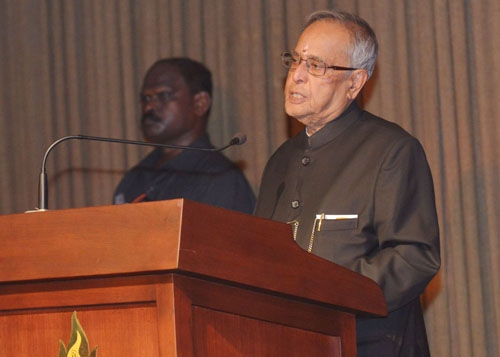
I am happy to be here in Chennai this evening to deliver the First Rukmini Devi Memorial Lecture. Kalakshetra is hallowed ground. It has been made holy because of vision of Smt. Rukmini Devi. It has been sanctified further because of its decades of adherence to all things glorious in our heritage. It stands as, not just a testament to beauty and a tangible legacy, but also to the teaching of the classical arts and the guru-sishya parampara.
Kalakshetra was founded in 1936 by Smt. Rukmini Devi. Among the early supporters of her vision to revive India’s priceless artistic traditions was Gurudev Rabindranath Tagore. In fact, Gurudev was one of the early patrons of the Besant Memorial School which has since become a part of the Kalakshetra Foundation. Gurudev is also believed to have been so captivated by the name Kalakshetra, that he remarked had the name occurred to him when he founded Santiniketan, he would have chosen it for the institution that he founded! Gurudev’s relationship with the Arundales pre-dates his association as patron of the Besant Memorial School. He was the Chancellor of the National University, founded by him and Annie Besant, of which George Arundale was made Principal in 1913.
Standing here, other crisscrosses and interweaves present themselves to us. Tiruvanmiyur, where we are today, was once on the outskirts of Madras, away from the bustle of the burgeoning city. Under the watchful eye of Smt. Rukmini Devi, a sandy stretch on the beach blossomed into a verdant ecosystem nurturing the arts and the crafts. What Kalakshetra is to Tiruvanmiyur, Santiniketan is to Bolpur. What Kalakshetra is to Chennai, Santiniketan is to Kolkata. They are havens of peace; temples of the arts; and beacons for humanity.
They were not set up to sequester, but to protect the arts and to provide a nourishing womb for their development. The protection meant providing a moment of pause from the loud cycles of life. Creativity requires both silence and the opportunity to connect with the wellspring of nature’s bubbling creative potential. And these twin attributes are at the heart of both Santiniketan and Kalakshetra. The performing arts cannot remain impervious to the decay of nature’s resources worldwide and to the degeneration of the seasons.
Ritu, the Sanskrit word for season, derives from the Vedic Sanskrit word Rta which means the order or course of things. The accumulation and the aggregation of human thought and the exaltation of aesthetics coupled with the refinement of thought, word and movement over millennia, have given us the various streams of classical culture. This makes the streams of classical culture our link with the past. They are the foundation for our current thought and by extension, the platform for our future action.
We are at a time when the ritus are ever-changing and the matrix of human interaction with the physical environment is changing. Among the many steps we need to take are the steps to shelter the ritus in classical culture. At the time of founding Kalakshetra, the great artiste and visionary that she was, Smt. Rukmini Devi was sensitive enough to perceive the steps that she herself, and others of her generation, had to take to revive our classical culture and to make them living traditions in our country. Today, the task before us is to preserve them and aid their continued flourishing in the best possible manner, with institutions like Kalakshetra providing the bedrock of support in this crucial societal responsibility.
Jai Hind.
Thank you.
